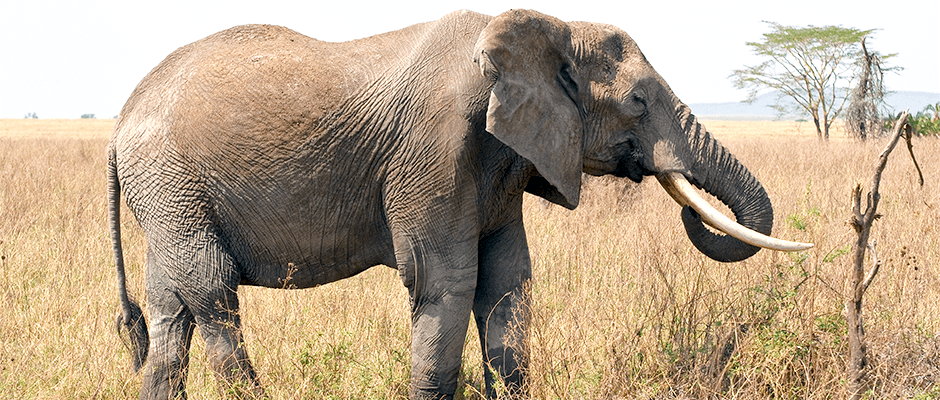Share this article
For species to succeed, size and energy go hand in hand
Consider two common patterns in nature. The bigger the animal, the fewer the individuals. That’s Damuth’s law. And land mammals tend to evolve toward bigger body sizes. That’s Cope’s rule.
These patterns show up over and over again. But why?
A new model that incorporates the dynamics of starvation and recovery in a population of foraging animals may point to an answer. Species of different sizes, the researchers found, gravitate toward population states more resilient against extinction. The key feature the researchers introduced is a simple one: “Hungry” animals can die from starvation, while “full” animals have enough energy to reproduce.
“The two most vital things every organism requires is to pass down their genetic material from one generation to the next and to find enough energy to carry out that task,” said Justin Yeakel, an assistant professor at the University of California Merced and author of the recent study published in Nature Communications. “If nothing else, you have to do that if you want to survive as a species.”
When individuals lack food, “reproduction is put on the backburner,” he said.
In the study, Yeakel and his coauthors spent a lot of time sketching on whiteboards to understand how different elements of a species’ body size affects its extinction risk. The model incorporates the body sizes of different terrestrial mammals and whether the animals are starved or full to determine how they interact and procreate on a landscape with limited resources. The bottom line they found for all the elements was body size.
“The size of an organism determines how much fat can be stored on its body, how quickly it can move from a starved to a full state, and the time required to produce offspring,” he said.
Once they found that the model behaved differently based on body size, certain patterns observed in nature came into view. Why are there so many more mites than elephants? Differences in the rates of starvation and recovery lead to different predictions of abundance for smaller and larger organisms, Yeakel said. Why do mammals increase in body size over evolutionary time? The model suggests these different rates lead to competitive advantages for organisms that can afford to carry more body fat.
Up to a point.
At a certain size, the pattern reverses itself, they found, and being lean provides the advantage. That point, Yeakel said, turns out to be the largest terrestrial mammal body size observed in fossil records. That record is a tie, held the Indricotherium, a giant prehistoric rhino, and Deinotherium, an ancient elephant relative, both of which weighed in at about two and a half times the size of today’s African elephants.
“Given our ability to predict some of these large-scale ecological and evolutionary patterns, we think that our model incorporates relationships that have not been explored in this way before,” Yeakel said.
Header Image: Why are there relatively few elephants in the world but lots of mites? It’s a balance of size and metabolism, according to a new model that looks at starvation and recovery in species. ©oliver.dodd








